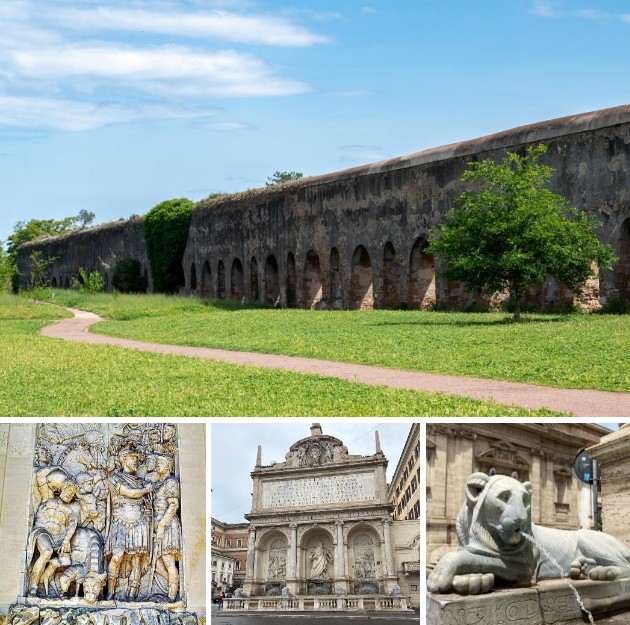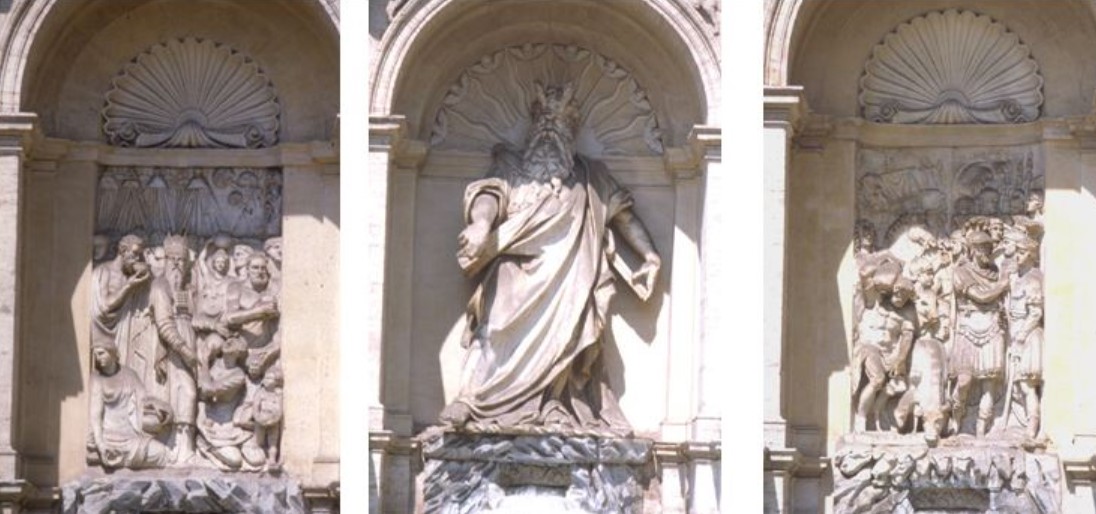The Felix Aqueduct's Triumphant Arches and Moses' Might
Rome, Italy
The Acqua Felix (Felice Aqueduct) takes its name from Pope Sixtus V (Cardinal Felice Peretti, 1521-1590), who completed its construction between 1585 and 1587, a project begun by his predecessor Gregory XIII (1502-1585). Sixtus V made the decision to finish it on the very day he took possession of the Basilica of St. John Lateran. Its purpose was to supply water to the areas adjacent to the Viminal and Quirinal hills. It was the first aqueduct built in Rome after the fall of the Western Roman Empire.
Its water comes largely from the Alexandrino aqueduct. Where the aqueduct's path crossed the major consular roads, following the practice of ancient Roman architects, monumental arches were constructed. It stretches along a route of approximately 24 km, culminating at the Moses Fountain in Largo Santa Susanna.
The Pope purchased the aqueduct rights from the Colonna family. The works cost a total of 270,000 scudi and lasted about two years, employing four thousand workers who often had to be replaced due to malaria.
Work began in 1585 under the direction of Matteo Bartolini. However, due to serious design flaws that would have prevented water from flowing towards the city, Giovanni Fontana took over and completed the project in 1587. This achievement came at the cost of destroying sections of the ancient Aqua Marcia, Aqua Tepula, and Aqua Iulia aqueducts.
In the mid-19th century, the water flow was interrupted to restore 15 arches that were falling into ruin.
The aqueduct supplied water to numerous Roman fountains, including not only the Moses Fountain but also the Triton Fountain, the Fountain of the Bees, the fountain in Piazza Santa Maria Maggiore, and the Fountain of the Goddess Roma in Piazza del Campidoglio.

The Felice Aqueduct and The Moses Fountain
The Moses Fountain in Piazza San Bernardo was erected between 1585 and 1589 as the terminal display fountain for the Felice Aqueduct, designed by Domenico Fontana.
Inspired by triumphal arch and nymphaeum designs, the architect created a structure resembling a triumphal arch with three bays. It was constructed using travertine, marble, and stucco. Four large columns of colored marble set on high stylobates frame the openings to three large niches. The central niche houses the colossal, though somewhat disproportioned, statue of Moses, the work of Prospero Antichi (known c. 1578-1591) and Leonardo Sormani (known c. 1550-1590), who completed it. The lateral niches contain high-reliefs depicting biblical scenes: Aaron guiding the Jewish people to drink water (left), with sculptures by Gian Battista della Porta (1542-1597), and Joshua leading the Jews across the dry bed of the Jordan River (right), with sculptures by Pietro Paolo Olivieri (1538-1605) and Flaminio Vacca (1538-1605).

Scene of Aaron (Left) - Moses (Center) - Scene of Joshua (Right)
At the base of the niches, water flows from artificial rock formations made of cipollino marble into basins originally adorned with four ancient porphyry and marble lions from the Pantheon and the Lateran. These were replaced in 1850 by lions in bardiglio marble, sculpted by Adamo Tadolini (1788-1868). The original Egyptian lions were moved to the Vatican Museums by Gregory XVI.
The fountain's base is enclosed by a travertine balustrade, originally created during the time of Pius IV (1559-1565) for the Belvedere Courtyard in the Vatican and reused here.
Above the columns runs a cornice bearing the dates of the fountain's construction (1585-1587) and the very tall attic containing a long commemorative inscription. This is surmounted by the papal coat of arms supported by two angels. A gilded copper cross crowns the structure, an element present on all the "notable constructions" built by Sixtus V.
Rome, largo Santa Susanna
